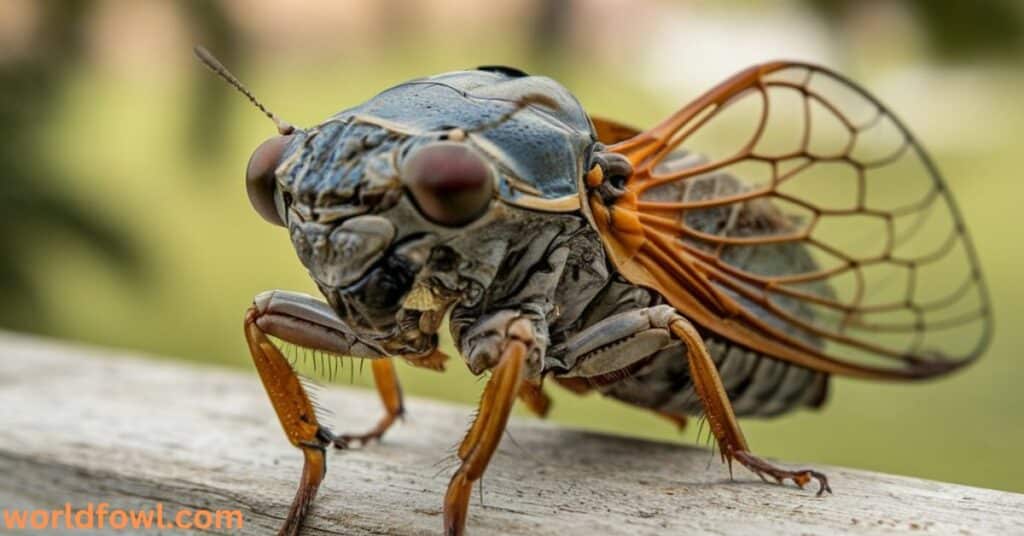Cicadas are often surrounded by a shroud of mystery and fear. These fascinating insects are infamous for their loud, shrill mating calls, their large, imposing eyes, and the sheer number of individuals that can appear during their mass emergences. One common misconception, however, is the idea that cicadas attack humans. With the loud buzzing and their sudden, erratic flight patterns, many wonder whether cicadas can pose a danger to people. But Do Cicadas Attack Humans? In this comprehensive deep dive, we’ll explore the facts behind these myths, discussing cicada behavior, their role in the ecosystem, and why they don’t attack humans, despite their intimidating appearance.
What Are Cicadas?
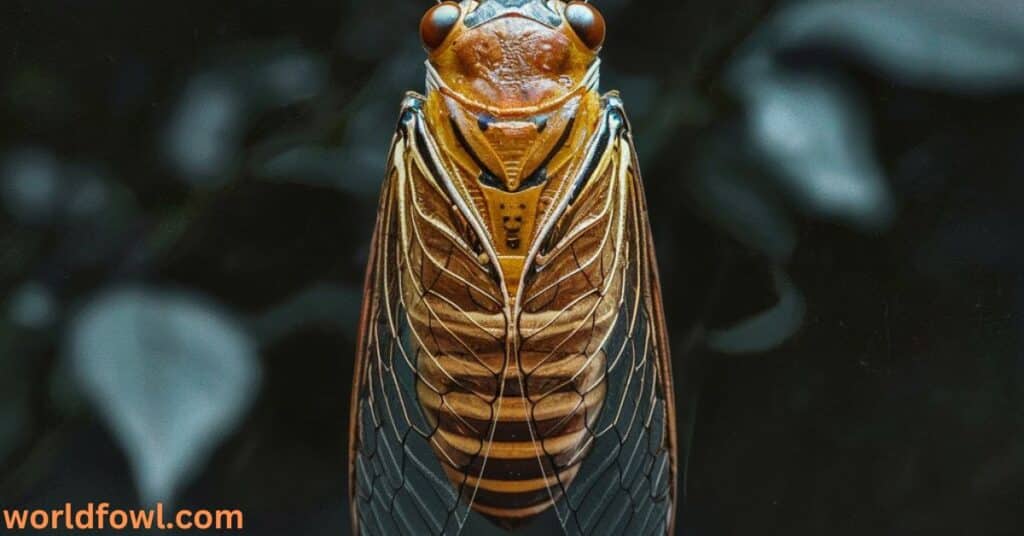
Cicadas are insects that belong to the order Hemiptera, which includes other sap-feeding insects like aphids and whiteflies. These insects are often recognized by their large, bulging eyes, translucent wings, and their propensity to make loud, buzzing sounds. Cicadas spend most of their life underground as nymphs, feeding on tree sap before emerging as adults to mate.
Cicadas are divided into two main types:
- Annual Cicadas: These emerge every year in smaller numbers. They are typically seen in the summer, and while they make loud noises, their emergences are not nearly as large or as dramatic as those of their periodical cousins.
- Periodical Cicadas: These emerge in massive numbers every 13 or 17 years, depending on the species. The sheer volume of their appearance can cause awe—and fear—among people who encounter them for the first time.
Though cicadas are most often associated with summer, they have a complex life cycle that can span several years, particularly for periodical cicadas, whose nymphs spend most of their lives underground before emerging in synchronized mass swarms.
Physical Features of Cicadas
Understanding cicadas’ physical traits can help clarify why they pose no threat to humans. Cicadas are known for their:
- Transparent Wings: Cicadas’ wings are delicate, veined, and often appear to shimmer in the sunlight. They have two pairs of wings, and their large size helps them fly for short distances.
- Proboscis: Cicadas have a specialized mouthpart called a proboscis, which they use to pierce tree bark and feed on sap. Their feeding does not harm humans or animals directly. This feeding behavior is completely harmless to people.
- Large, Bulging Eyes: Cicadas are equipped with large compound eyes that help them detect predators and potential mates. They do not use their eyes to track humans or interact with them in any aggressive way.
- Size: Cicadas are relatively large insects, measuring between 1 and 2 inches long. Their size, combined with their loud calls, can make them seem more intimidating than they are.
In short, while cicadas are visually striking, their physical features are geared toward survival and reproduction, not attack.
See Also : Why Do Bees Attack Humans?
Do Cicadas Attack Humans
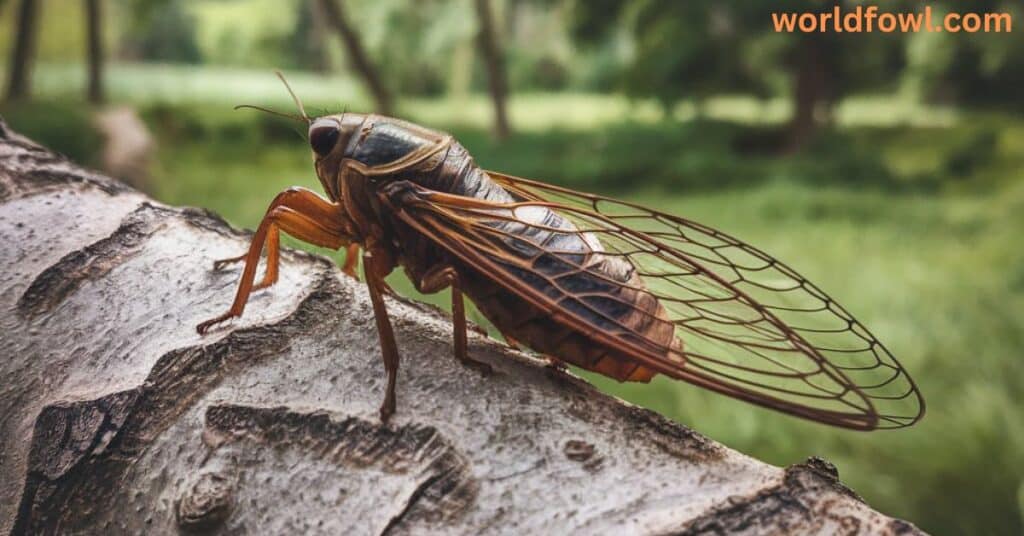
To answer the question upfront: cicadas do not attack humans. While they may seem alarming due to their size, volume, and numbers, cicadas do not pose a direct threat to humans. They do not have the biological tools necessary for attacking, such as stingers or venom.
Cicada Behavior and Why They Don’t Attack Humans
Cicadas are sap-feeders—they feed on the juices of trees, specifically the sap that circulates through tree bark. Their primary goal is survival, feeding, and reproduction, not engaging with humans. When cicadas emerge from the ground, they are motivated by a singular drive to mate, and their behavior revolves entirely around finding mates and continuing their life cycle.
Unlike insects that are known for their aggressive behavior, like mosquitoes, wasps, or hornets, cicadas do not have defense mechanisms that would allow them to harm humans. Here’s why:
- No Stingers or Biting Mechanism: Cicadas lack stingers, and their mouthparts are designed only for piercing tree bark to feed on sap. They cannot bite or sting humans in any way.
- No Venom: Cicadas do not produce venom, so even if they were to come into contact with a person, there is no risk of venomous bites or stings.
- Erratic Flight, Not Aggression: Cicadas’ flight patterns are often erratic and unpredictable, especially when they are startled. If a cicada flies into you, it’s most likely an accident, not an attack. They’re simply trying to avoid predators or find mates.
The Importance of Cicada Behavior
Cicadas are actually quite passive in their interactions with the environment. Their loud buzzing or mating calls might seem intimidating, but they’re simply a means of attracting mates. During their emergence, periodical cicadas may appear in vast numbers, and while this can seem overwhelming, it’s essential to recognize that these behaviors are not aimed at humans.
Human-Cicada Interaction: Myths vs. Reality
Despite their large numbers and loud buzzing, cicadas do not actively target humans. However, because of the scale of their emergence, some myths about cicadas have circulated. Let’s break down some of the common misconceptions:
Myth #1: Cicadas are dangerous to humans.
Reality: Cicadas do not bite, sting, or cause any harm to humans. They feed on tree sap and engage in mating rituals, not aggression. Their physical features do not allow them to attack.
Myth #2: Cicadas will swarm and attack when disturbed.
Reality: Cicadas do not swarm humans or actively attack. If disturbed, they may fly in random directions, but this is purely a reflex, not an act of aggression.
Myth #3: Cicadas will damage your skin or cause infections.
Reality: Cicadas do not bite or pierce human skin. They do not carry diseases or cause any physical harm to people.
See Also : Do Praying Mantis Attack Humans? Praying Mantis vs. Humans!
Cicadas’ Feeding Habits
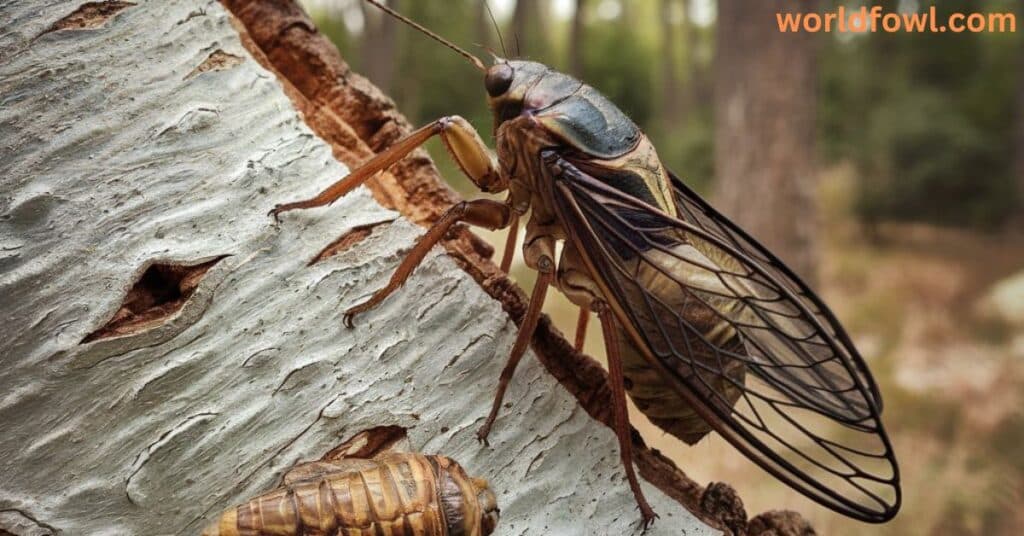
How Cicadas Feed
Cicadas are primarily sap-feeders. They use their long proboscis to pierce tree bark and extract sap. This sap provides them with the nutrients they need to survive. Their feeding does not harm the tree significantly, although egg-laying damage can cause some superficial harm to young trees.
Cicadas don’t feed on humans or animals. Their behavior is entirely centered around feeding on plant life, and they are not attracted to human blood, unlike mosquitoes or ticks.
Cicadas and Their Role in Plant Health
Cicadas feed on the sap of trees and shrubs, but their presence is rarely harmful to plants. In fact, they contribute to tree health in several ways:
- Tree Aeration: Cicadas’ feeding stimulates the circulation of nutrients and water in trees, which can contribute to healthier plant growth.
- Soil Health: When cicadas die after mating, their decomposing bodies enrich the soil, promoting healthy plant life for future generations.
However, it’s important to note that during their egg-laying process, cicadas may cause some damage to the branches of trees. Female cicadas cut slits in the bark to lay their eggs. This process weakens the tree branches, and in extreme cases, could cause the branches to break.
The Impact of Egg-Laying
Cicada eggs are deposited in the bark of trees, and the egg-laying damage can weaken branches. This might cause them to snap, particularly in younger or weaker trees. However, this is generally a minor issue, and healthy, mature trees typically withstand this process without significant damage.
Despite this, cicadas do not attack trees or animals for the sake of harming them; they are simply reproducing
See Also : Hornet Spiritual Meaning: Strength, Protection, and Transformation
Why Cicadas Don’t Interact Aggressively with Humans
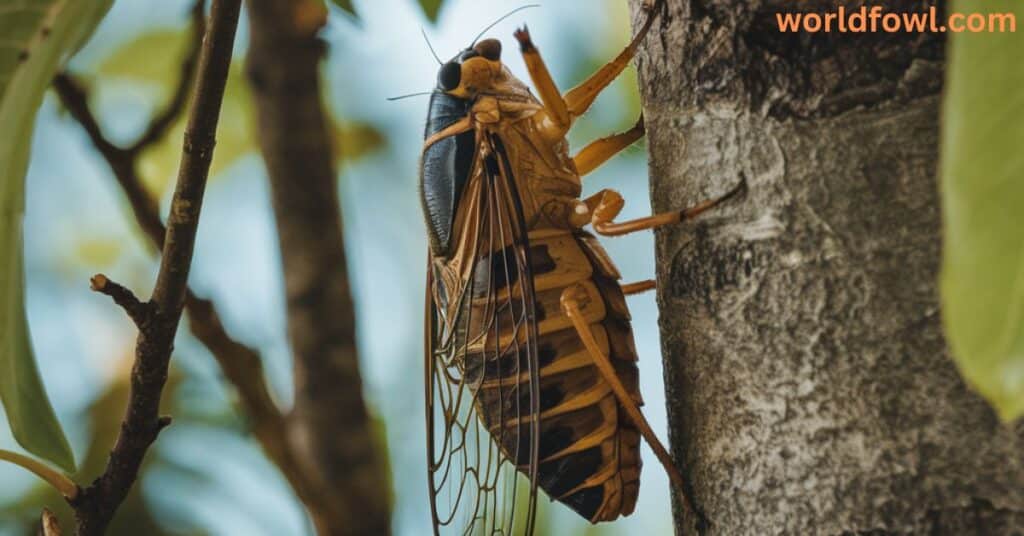
If you encounter a cicada, there’s no reason to worry. Cicadas are not predators, and they are not interested in humans. In fact, most of their behavior is focused on:
- Feeding on tree sap to sustain themselves.
- Mating during their periodic emergences.
- Avoiding predators, such as birds and other animals.
Their loud mating calls are part of their reproductive strategy, not an effort to communicate with humans. While they might seem overwhelming due to their volume and large numbers, they are not aggressive creatures.
Common Encounters with Cicadas
It’s not uncommon for cicadas to land on people, especially during their swarm emergence. However, these encounters are harmless. Cicadas are not trying to interact with humans in any hostile way. They might land on you simply because they are in search of a suitable location to rest or mate.
When cicadas do make contact with people, it is typically because they are startled, not because they are attacking. If you find a cicada on you, simply allow it to fly away.
Physical Harmlessness
Cicadas are, in essence, physically harmless. Despite their large size and loud calls, they are not equipped to harm humans or animals. Here’s a deeper look at why cicadas don’t pose any physical threat:
- No Biting or Stinging: Unlike mosquitoes or wasps, cicadas do not bite or sting. Their proboscis is only used for feeding on tree sap, not for attacking.
- No Venom: Cicadas are venom-free. They do not produce toxins or poison, making them harmless to people.
- No Aggressive Defense: Cicadas do not have a defense mechanism to protect themselves from predators. Their primary defense is their ability to fly away quickly when threatened, not attack.
Can Cicadas Harm Your Pets?
No, cicadas are not dangerous to pets. Though some animals, like birds and dogs, may be tempted to eat cicadas, these insects are not harmful to animals. However, pets should be monitored to ensure they don’t consume large numbers of cicadas, as it could cause mild digestive upset.
See Also : Do Hummingbirds Attack Humans? Unexpected Aggressors!
Why Are People Afraid of Cicadas?
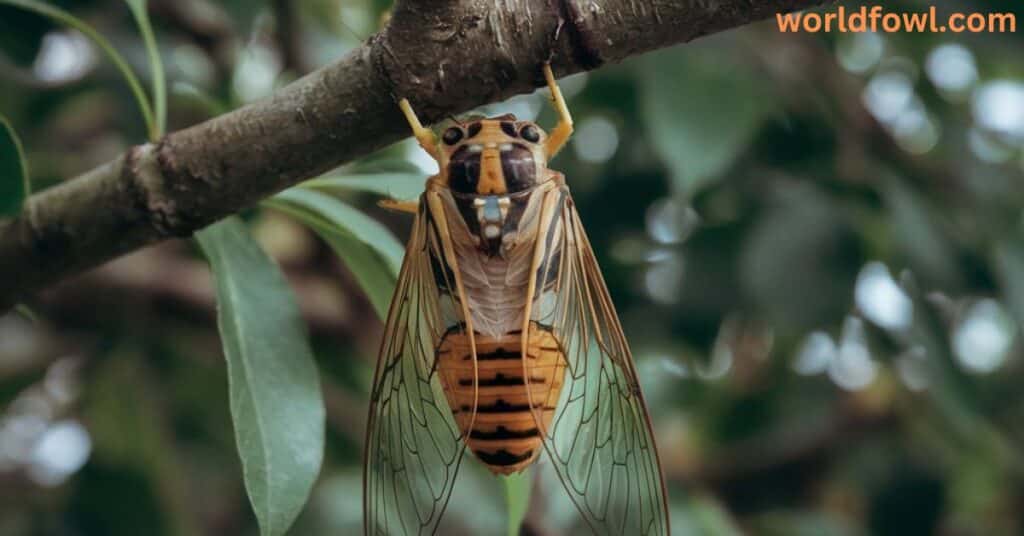
Fear of cicadas is understandable, particularly for those who aren’t familiar with these insects. The loud buzzing they make, combined with their large numbers during swarm emergence, can be overwhelming. People might mistake the erratic flight patterns for aggression, even though the cicadas are merely trying to avoid predators or find mates.
There’s also the fact that cicadas can seem like a massive, invasive force. When millions of cicadas emerge from the ground at once, it’s easy to see why someone unfamiliar with the insects might think they’re under attack. But again, this is a misunderstanding. Cicadas are simply engaging in their life cycle.
The Role of Cicadas in the Ecosystem
Despite their intimidating appearance, cicadas play an important role in ecosystems. Here’s how they contribute:
- Food Source for Predators: Cicadas provide a critical food source for birds, mammals, and other insects. Their mass emergence provides a feast for animals that rely on them as a nutritional resource.
- Soil Health: When cicadas die after mating, their decomposing bodies contribute organic matter to the soil, which helps plants grow.
- Pollination: While not major pollinators, cicadas may contribute to the pollination of plants as they move from one tree to another, feeding on sap.
Are There Any Risks Associated with Cicadas?
Cicadas themselves are not dangerous, but there are a few risks to be aware of:
- Tree Damage: In some cases, the process of egg-laying can weaken tree branches, but this is not a major concern for most mature trees.
- Allergic Reactions: Some people may experience mild allergic reactions to cicada bodies or shed skins, but these reactions are rare.
Cicadas do not transmit diseases to humans or animals, so the risks they pose are minimal.
What to Do if You Encounter Cicadas?
If you come across a cicada, here’s what to do:
- Stay calm: Cicadas won’t harm you, so there’s no need to panic.
- Relocate gently: If a cicada lands on you, simply allow it to fly away.
- Cover up: If you’re sensitive to the noise, you can use earplugs or noise-canceling headphones to block out the sound.
Final Verdict
Do cicadas attack humans? The answer is clear: No, cicadas do not attack humans. Despite their large size, loud buzzing, and sudden swarm emergence, cicadas are harmless creatures. They don’t have the means to harm humans, and their behavior is driven by the need to mate and feed—not to attack. By understanding cicadas’ behavior and their role in the environment, we can appreciate them for the important role they play in nature without fearing them.
FAQs
Can cicadas bite or sting humans?
No, cicadas cannot bite or sting. They are sap-feeding insects, and their mouthparts are not designed for biting or stinging humans.
Why do cicadas make so much noise?
Cicadas produce loud mating calls to attract mates. The noise is a critical part of their life cycle, especially for periodical cicadas during their swarm emergence.
What attracts cicadas to certain areas?
Cicadas are drawn to areas with abundant vegetation, particularly trees that offer a food source of sap and suitable locations for laying eggs.
How long do cicada swarms last?
Swarms last for a few weeks, typically during the swarm emergence phase. However, periodical cicadas may appear every 13-17 years in massive numbers.
Are cicadas harmful to pets?
Cicadas are not harmful to pets, though it’s best to monitor pets if they consume too many of them. Some animals, including dogs and birds, may eat cicadas without issue.
Conclusion: Do Cicadas Attack Humans?
In conclusion, cicadas do not attack humans. While their loud calls and large numbers can be overwhelming, cicadas are harmless creatures. Their primary purpose is to mate, feed, and continue their life cycle—not to cause harm. Understanding their behavior and role in the ecosystem will help dispel fears and help us appreciate these fascinating insects for their contributions to the natural world.

Henry James is a seasoned blogger and a passionate storyteller on “World Fowl.” With years of experience crafting engaging content, he brings a unique blend of expertise and creativity to his writing. Henry specializes in exploring diverse topics with depth and clarity, captivating readers worldwide.

